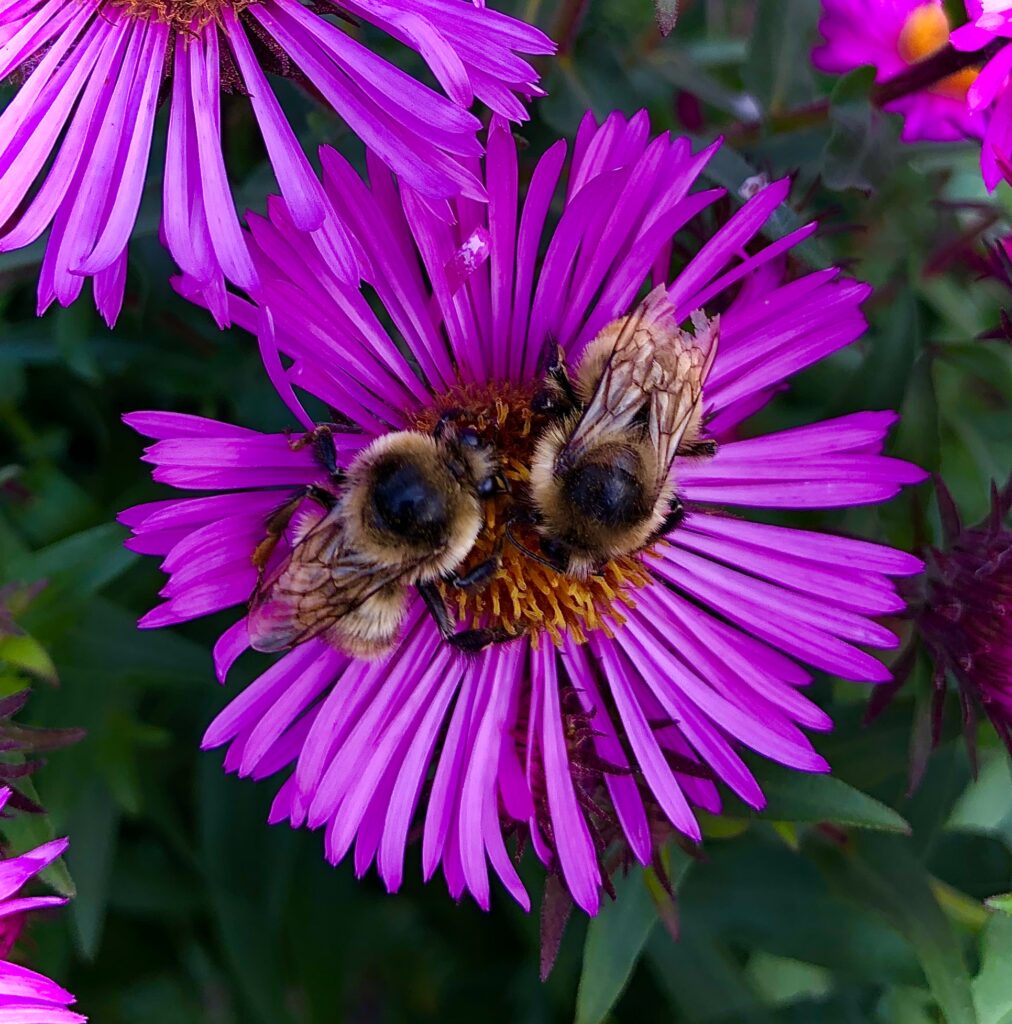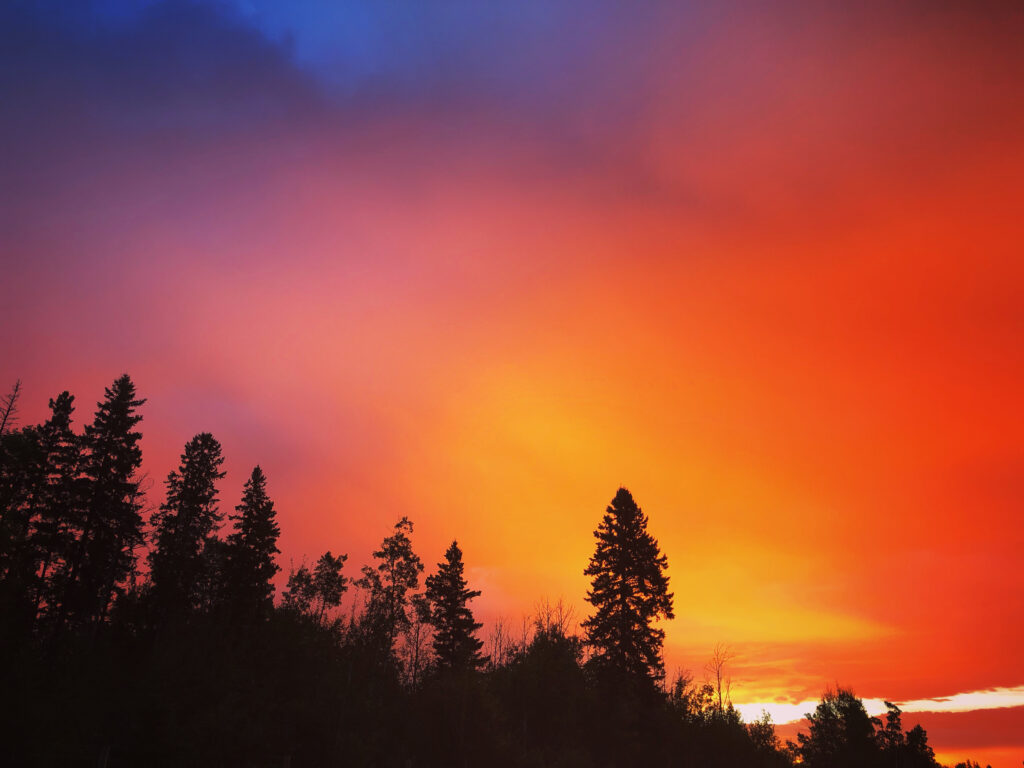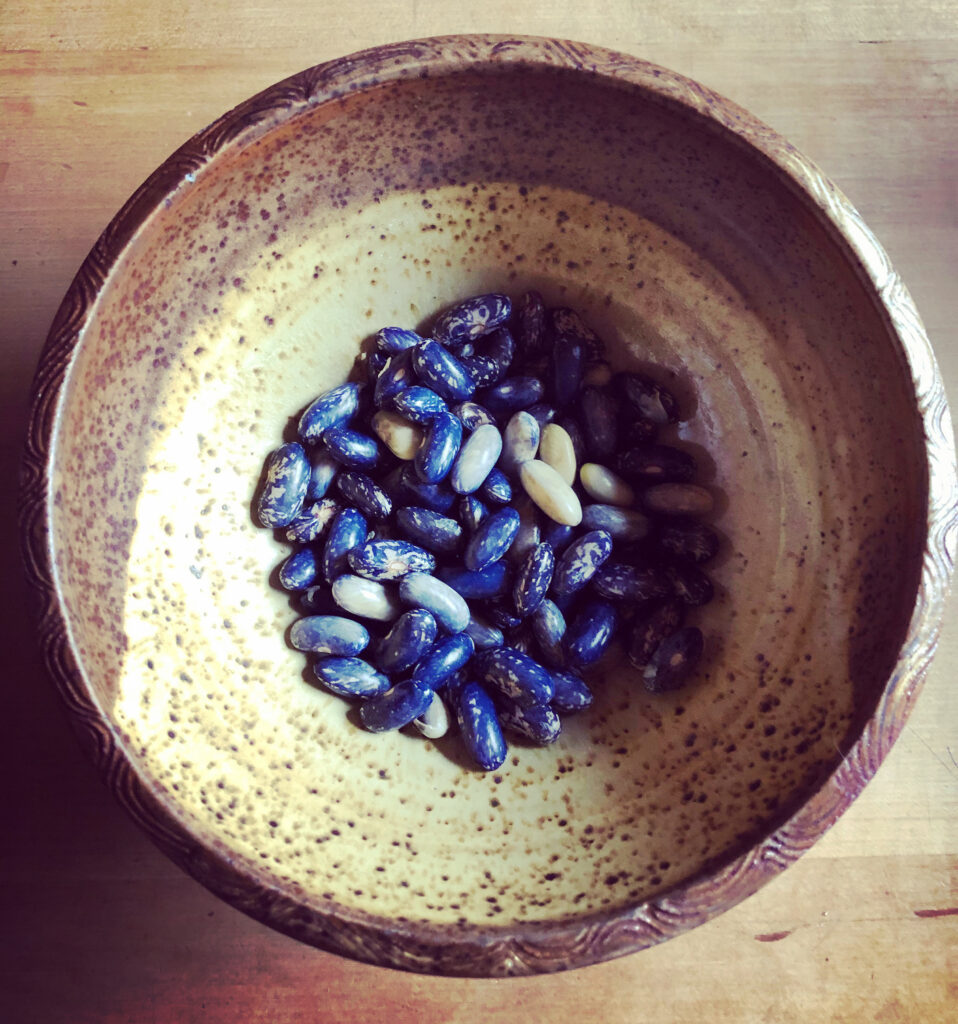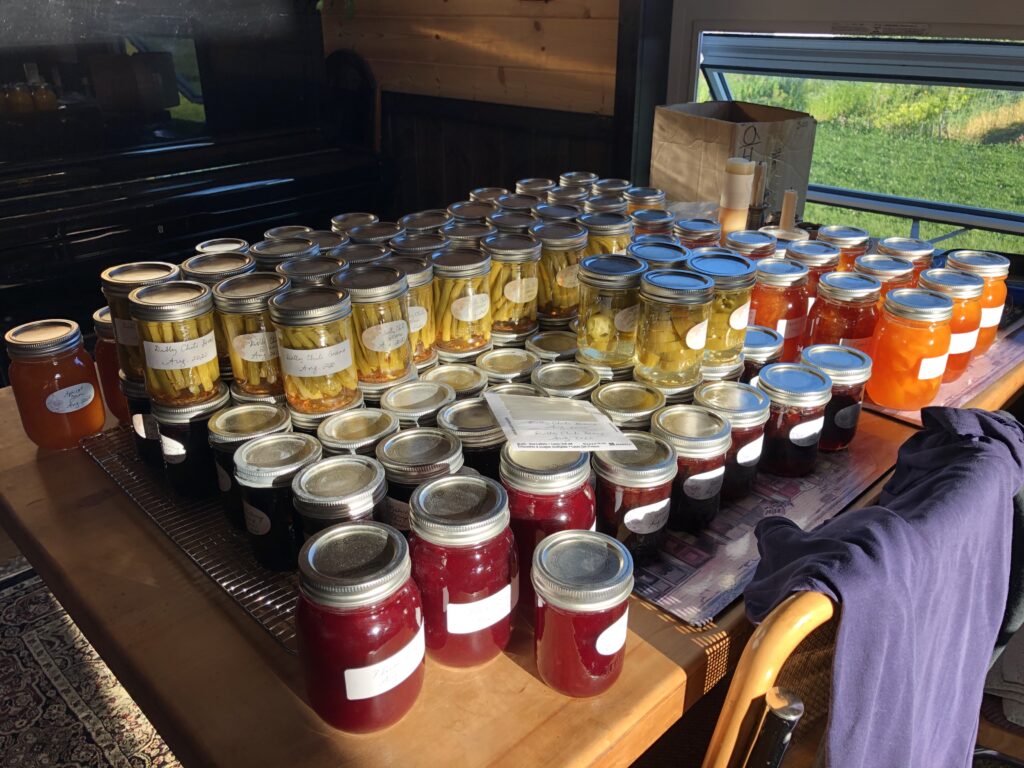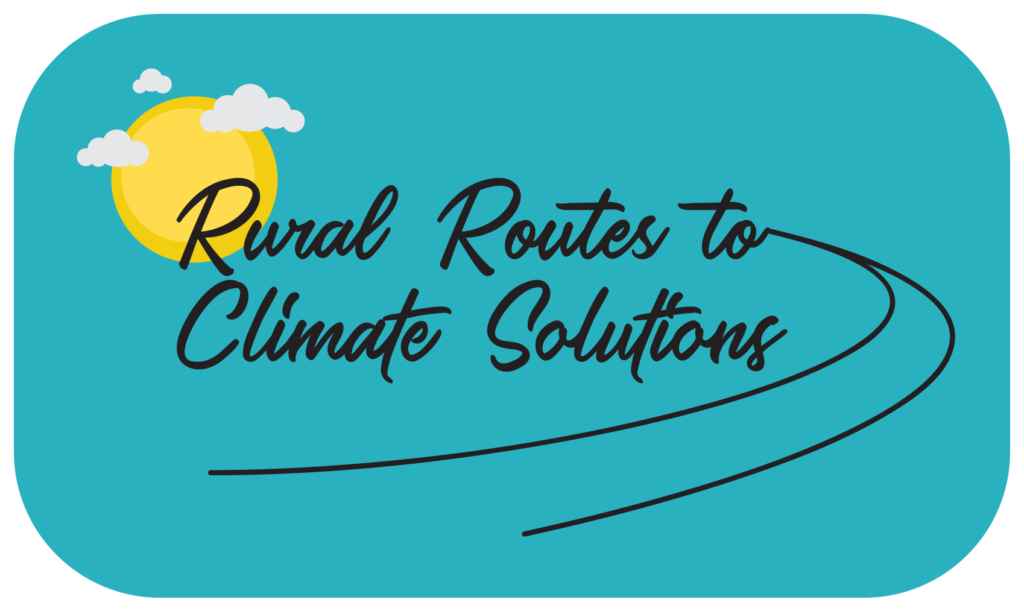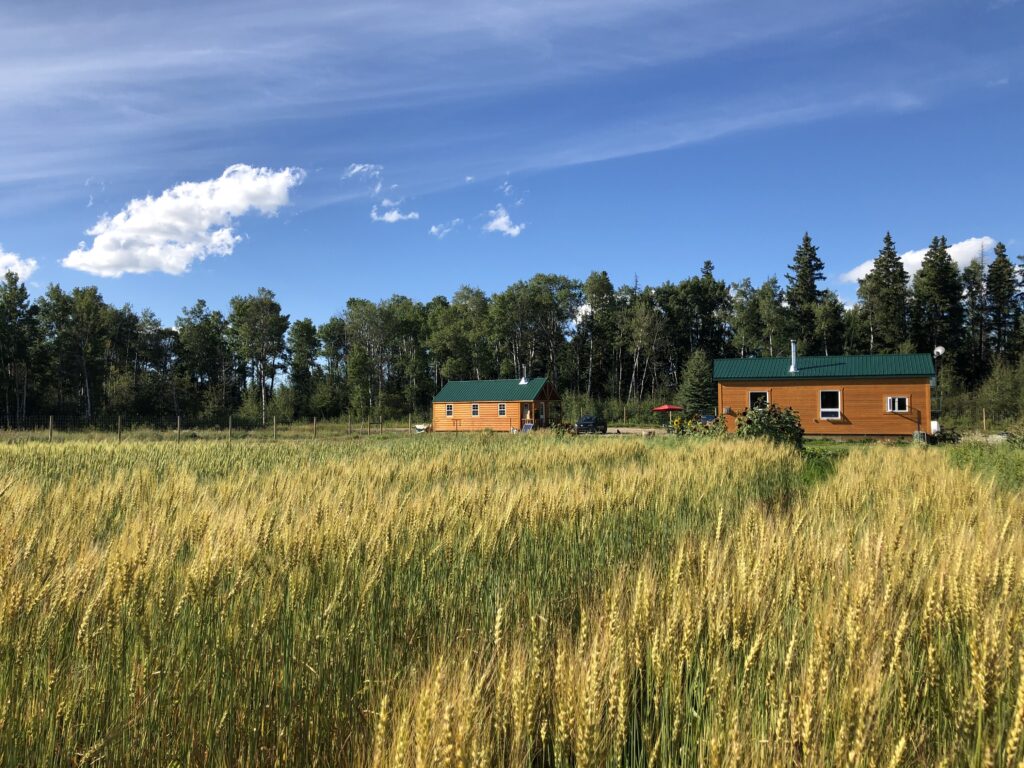 In Conversation with Jenna Butler, BIPOC Organic Farmer, Beekeeper, Writer on Treaty 6, traditional territories of the Cree, Saulteaux, Niitsitapi (Blackfoot), Métis, and Nakota Sioux
In Conversation with Jenna Butler, BIPOC Organic Farmer, Beekeeper, Writer on Treaty 6, traditional territories of the Cree, Saulteaux, Niitsitapi (Blackfoot), Métis, and Nakota Sioux
By Trina Moyles
Over the past fifteen years, Jenna Butler and Thomas Lock have eked out a home in the northern bush, relying on human-powered equipment to build Larch Grove Farm, a small organic vegetable and flower farm, entirely from the muskeg up.
For Jenna and Thomas, both teachers by trade, it was always a dream to build a life off-grid and grow organic food for their community. In 2006, they began to look for farmland around Edmonton, but the exorbitant cost of land — in some areas, upward of a million dollars — was insurmountable on teacher’s salaries. Instead, they set their sights northwest of the city and came to fall in love with 160-acres of “rough northern bush” in Barrhead County.
Through careful observation of land and climate, Jenna and Thomas have gradually built two cabins, a greenhouse, an organic market garden, and apiary. They’re also in the process of establishing a shelter belt and heirloom flower garden. Of the 160-acres, Jenna and Thomas steward 25-acres to grow organic vegetables, herbs, and flowers and raise honeybees. It’s always been important to the couple that they stay small-scale, while leaving intact the old-growth forest on the land. When they discovered that the farm is set on a prehistoric lake bed, a natural water reservoir for the community, they felt an additional responsibility to plant native trees and shrubs to steward the water resource. Often, in conventional agriculture, muskeg areas and sloughs are drained and ploughed.
“There’s an awareness that we can’t damage this forest ecosystem,” says Jenna. “Right away, we thought, okay, there’s no way we’re clearing anything, we’re going to work with what’s already here.”
But due to climate change, Jenna and Thomas’s journey into farming has been anything but straight forward. In 2018, after heavy rains flooded their market garden and home, they made the difficult decision to literally jack up the cabin and use fencepost rollers to roll it, inch by inch, up to higher ground onto the old hayfield.
“I think if we hadn’t been a small farm, we wouldn’t still be here,” admits Jenna. “Many of our neighbours who have larger farms — grain and cattle — they’ve had to sell out and move because of flood years, drought years, and this increasingly warming trend we’re seeing.”
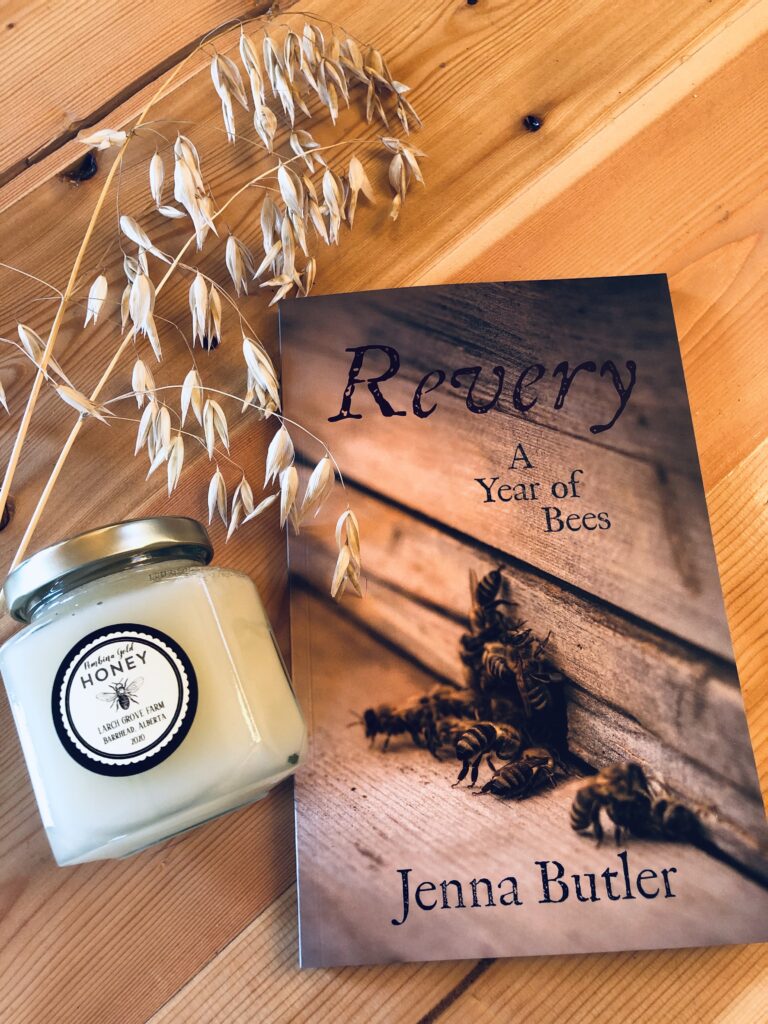 Today, Jenna and Thomas are in the process of rebuilding the market vegetable and herb garden, while focusing on restoring health and vitality back into the compacted hayfield. Their goal is to expand into an heirloom flower farm to offer a CSA program to the community (with organic, unsprayed flowers), while providing food for their honeybees and the native bees. They also want to create access for community members to grow their own food and forage for wild foods. “Everything works together,” explains Jenna, “And we’re building on this already incredibly resilient ecosystem.”
Today, Jenna and Thomas are in the process of rebuilding the market vegetable and herb garden, while focusing on restoring health and vitality back into the compacted hayfield. Their goal is to expand into an heirloom flower farm to offer a CSA program to the community (with organic, unsprayed flowers), while providing food for their honeybees and the native bees. They also want to create access for community members to grow their own food and forage for wild foods. “Everything works together,” explains Jenna, “And we’re building on this already incredibly resilient ecosystem.”
Aside from farming and teaching creative writing at Red Deer Polytechnic, Jenna is also a practicing herbalist, and the author of many books, including A Profession of Hope: Farming on the Edge of the Grizzly Trail, and Revery: A Year of Bees. Recently, we had the pleasure of interviewing Jenna about her work as an organic farmer and land steward at Larch Grove Farm.
Together, we talk about soil health, biodiversity, learning from honeybees and wild bees, and struggling to adapt to a rapidly changing climate. Jenna also opens up about her experience as a BIPOC farmer and land steward in Alberta, and the importance of creating accessibility for marginalized communities to access land to grow food, forage, and save seeds, while participating in dialogue on land stewardship and climate change.
RR2CS: What’s been your approach to regenerating soil in the compacted hayfield?
Jenna: The hay field has been farmed fairly intensively since the 1920s. In the past, previous owners used large equipment on it, which wasn’t ideal because we have a high peat content in our soil. What’s resulted from that is many bumps and lumps in the field. It’s considered really difficult, marginal land because large equipment can’t handle the peat lumps. But as small-scale farmers, we’ve been working with predominantly human powered equipment. Occasionally, we will work with a small tractor, but we use only very light equipment. We were able to even out some of the areas in the field that had been quite overworked. Then, we planted green manures and cover crops to help build up the topsoil again, which had been pretty depleted over the years.
We’re focused on using varieties that work to fix nitrogen in the soil, build topsoil, and open up the porosity of the soil because it had been so compacted. We grow a lot of organic alfalfa. It’s important that we use organic varieties, as we’re hoping to grow organic certified crops. When we started out in 2006 here, Thomas and I promised one another that we weren’t going to use sprays. We weren’t going to use fungicides, herbicides, nor pesticides — partly for the health of the land and the diversity of the ecosystem, and partly for our own health. We’re growing peas and oats to bring nitrogen back into the soil. Sometimes we plant sorghum grass in the really compacted soil because it helps to burst open the heavy tractor pan that has developed in the soil over the years. A tractor pan is a really heavy, thick layer that builds up in the soil when it’s been overworked by large equipment, and it makes it very hard for crop roots and water and nutrients to penetrate deeply. Buckwheat is great for the foraging wild bees and our honeybees, and we’re also looking at various grass mixes — peas, rye, vetch — which can build topsoil, but also outcompete the weeds.
RR2CS: Your most recent book, Revery is an ode to your work as a beekeeper. Can you speak more to how bees came to the farm and what they mean to you?
Jenna: My husband and I both got into beekeeping at the same time. Managing a few hives felt like a logical extension for our small farm. We also wanted to offer candles, beeswax, healing salves, and other products to our community. It would add to the diversity of a small farm, so if anything were to fail in the market garden, or with the flowers, we’d know we had the honey to help out. But we wanted to plant not only for the honeybees, but for wild bees, too.
As a survivor of emotional and physical trauma from my early years, I turned to beekeeping because it seemed like one of the most painful things I could imagine. As a beekeeper, you’re working with hives that have up to 40,000 bees in the summer, and if something goes wrong, you’re going to get stung — a lot. I wanted to deal with my relationship to pain and fear.
It’s many people’s worst nightmare that they’ll get swarmed and stung by hundreds of bees. But what I’ve learned is if that’s your attitude, it might also be your experience. Sometimes I’ll go an entire season without getting stung and when it happens it’s because I’ve put my finger down on a worker bee when I’m moving a frame and the bee says ‘hey, what the heck’ and reminds me how I’ve come into their space. It’s made me more aware of how I carry myself not just around the bees, but in the market garden, and the larger space of the farm. That’s been a valuable lesson for me. Also, working with the honeybees has helped us to become more conscious of the wild bees who were here first, and to attempt to not impinge too much on their crucial space in the ecosystem.
RR2CS: What have the bees taught you about changing weather patterns and climate?
Jenna: Well, with honeybees, it’s more immediately evident because you’re looking at a hive that goes from only a few thousand bees in the early spring to 25,000 bees to 40,000 bees in the height of summer. But observing the honeybees also keys you into noticing how the wild bees are dealing with climate change. The wild bees are so tied to the plant species they pollinate. Say it’s an unusually warm spring and the willows flower early. You’d expect to see bumblebees, or native bees, in the willows, pollinating the flowers, but the bees haven’t come out of dormancy.
This summer, our honeybee colonies have been really agitated on the days with high wildfire smoke. Many beekeepers use a smoker to manipulate the hives. The smoker introduces a state of threat to the bees, which causes them to eat and fill up on honey. As a result, they become very mellow and calm because they’re preparing to maybe need to leave the hive. But when the bees are surrounded by wildfire smoke day after day, they are constantly in a watchful state. It’s been very worrisome. On one of the high smoke days, a hive that showed no signs of swarming just picked up and swarmed. They took off from the hive and landed on a nearby tree. I think it was in response to the wildfire smoke — they seemed very agitated and threatened by the smoke.
You know, as humans, we find the smoke particulate and haze really problematic. But what’s it like for other living things around us? We tend to be so focused on ourselves. But what’s it like for the birds? What impact is that going to have on the geese and crane flocks migrating south? Are we going to observe many songbird deaths like we saw last year? So we’re not only observing the bees, but the impact [of climate change] on other species, too.
RR2CS: How did Alberta’s extreme heat — the ‘heat dome’ — impact your farm this summer?
Jenna: One of the benefits of being small-scale farmers is that we have a very small space to irrigate. Some of our friends and neighbours (larger-scale farmers) were dealing with entire sections of land to irrigate. There’s not much you can do but watch the wheat failing to thrive. On our farm, we have the benefit of having a really large dugout, so we were able to pump water on the extremely hot days. That was critical because we just planted a shelter belt this year. Because we are off-grid, we also have a 1000 gallon rainwater cistern, which we filter for household needs. But we also pulled from the cistern on really hot days to irrigate the market garden. The heat dome impacted us in the sense that we were irrigating constantly. Even with the use of mulches and cover crops, we still had to water frequently. It was unexpected and put us behind in our work schedule. Plus, it’s physically very hard to have to go out and work in the field when it’s +45 degrees Celsius!
RR2CS: How are you trying to learn and adapt to the extreme growing conditions?
Jenna: Due to the circumstances of this season, I’m now looking at ways to maintain the soil moisture as much as possible. Even more so, we’re focusing on green manures and cover crops to keep the soil safe. When it hit 45 degrees Celsius here, day after day, the soil was at risk of becoming solarized. It was literally cooking.
Now with any open soil, I’m thinking, how can I cover that? How can I stop the soil organisms from baking? We also experienced these intense drying winds this summer, in a way that we’d never seen before. So we’re thinking more about the value and importance of shelter belts.
In the spring, we started planting a huge shelter belt — nearly 1000 new trees — to help protect the garden from the winds. We managed to plant the first two rows of a 7-row massive shelter belt. We put in lilac and poplar. Eventually we’ll plant progressive rows of spruce, willow, and wild roses to break the wind and add more ecosystem for the birds. We’ve got another five rows to plant. Thomas and I always said we’d plant more trees than we take down here. It’s partly to protect our garden against chemical drift (from nearby farms) and also from the increasingly drying winds, but also to provide more habitat for the ecosystem. The seedlings we planted this year managed to survive, although during the extreme heat, we were watering every three, or four days to keep them alive.
RR2CS: Who inspires your work as a farmer and land steward?
Jenna: I’m very inspired by Indigenous land stewards, many who are working with seed saving, including Tiffany Traverse at Fourth Sister Farm in Dawson Creek, B.C., along with educators such as Robin Wall Kimmerer, author of Braiding Sweetgrass. I’m inspired by Indigenous writers, artists, and land stewards in the Edmonton area who are working with Land Back.
As a woman of colour I tend to turn to BIPOC narratives of place and belonging. I’ve been reading works by Dr. Vandana Shiva lately, as well as Farming While Black, written by Leah Penniman of Soul Fire Farms in the US. The Colour of Food: Stories of Race, Resilience, and Farming by Natasha Bowens is on my to-read list this autumn.
I often think about being a woman of colour whose name is on a legal deed to a piece of land — land that is the traditional territory of Indigenous peoples. Myself, I’m a non-Indigenous woman of colour, and 150 years ago, my mother’s people would have been owned or controlled by colonial interests. They wouldn’t have had an ownership, or caretaker relationship with the land they worked on in Africa and India. Our farm is very close to the settlement of Campsie, Alberta, which is one of the five Black farming settlements in Alberta. So as one of the only woman of colour working a piece of land in this area, I am very aware of these multiple layered narratives of place.
I can’t say how much I dislike the idea of owning land. Partly out of respect for the land itself and not believing that land is ‘owned’, but also coming from a background where labour, body, and culture became a commodity. But I think that idea lends itself to my approach of learning from the land, and also learning from communities who have stewarded the land a lot longer than me. This is an ecosystem that has worked with in concert with many people before me. My husband and I both come from away. I often think, what would it be like to observe and work with this land for thousands of years? We’ve only worked here for fifteen years. I think that keeps us very humble in recognizing how much we don’t know.
RR2CS: As a woman of colour, what is your take on the Regenerative Agriculture movement? What is absolutely vital to the ongoing conversations?
Jenna: There are so many discussions around regenerative agriculture and resilience these days; they’re concepts that are closely tied together. Still, I often wonder about why are there not more BIPOC farmers? Why are there not more BIPOC seed keepers? What are some of the systemic blocks in place? Does everyone have access to land? Does everyone feel safe on the land? In the discussion of land in Alberta, I would say no. Indigenous land stewards are often made to feel unsafe on the land, and there’s something fundamentally wrong if that’s happening. As a farmer of colour myself, I am often left feeling very unsafe on the land in my own community, not from the more-than-human world, but from some of the humans in it. But at the same time, I have hope, yes, let’s run with what we’re doing in terms of soil health and regenerative practices.
But let’s not forget that predominantly our farmers, including small farmers, are still white farmers working within a colonial framework. I think a lot about how those of us who have access to land, knowledge, and resources can hold doors open for others to join in and share their knowing. There needs to be a greater diversity of people who have access to land and to be able to share their knowledge and experiences with our communities.
RR2CS: How does accessibility for BIPOC land stewards play into your long-term vision at Larch Grove Farm?
Jenna: I feel like we’re just getting our feet underneath ourselves to be able to survive year round, off-grid. But in the coming year, one of our big hopes is to start opening up the space (as the pandemic allows) to have more discussions about diversity to create and make available more safe spaces where people can come and grow. For me, it would be a dream to reach out to the local communities around us and say, if you want to grow food and you need a space, we’ve got room. You know, if you’ve moved here from away and you would love to grow something that reminds you of home, or you want to grow in a way that’s familiar to you. If you don’t have space, or access in your city, or town, you can come here to share what you know about growing food and feel that you can encounter this space safely.
RR2CS: What are some of your biggest lessons on the land?
Jenna: We learn a lot from what the muskeg on our land tells us year to year. In some years, the garden is suggesting ‘this would be a good area for a rainwater pond’ because it’s a low-lying area. So we build a swale, or a pond down to that area. This is how we approach building bodies of water. We’ve always built our ponds in spaces that the land suggests and the areas always fill themselves. We’ve never had to fill our large dugout — and it’s 18 feet deep.
It’s really about watching the land and meeting nature in the middle. If you want to push your agenda onto a space and the land is suggesting otherwise, it’s not going to pan out. For example, if you want to put an orchard in an area with heavy clay or muskeg, it won’t work. The land suggests places to us where it’s best for certain crops.
With climate change, we’ve noticed that it’s subject to shift from year to year, just like last year with high water to this year with drought. It’s a kind of a dance with the land. It’s a give and take relationship. The more I learn, the more I realize I have so far to go in my connection with this place, this land, with community. I don’t mind feeling like a beginner for the rest of my life in this journey; it keeps my mind wide open. That feels like a good place to be.
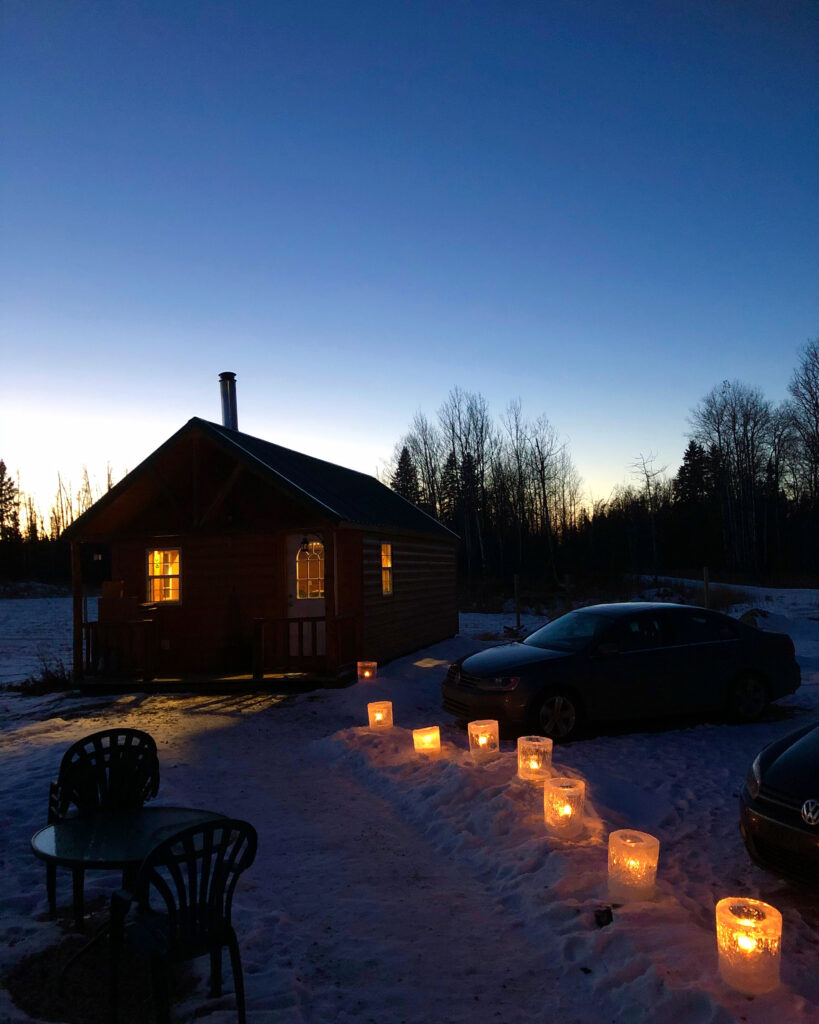
—

LARCH GROVE FARM - BARRHEAD COUNTY, TREATY 6
Jenna Butler and Thomas Lock manage Larch Grove Farm, 160 acres of forest, muskeg, and a hayfield from the 1920s that they’re restoring into a healthy ecosystem. They manage an organic and vegetable market garden and are working towards offering organic heirloom flowers to their community. Their vision is to provide access to BIPOC land stewards to safely grow food and forage wild foods on the land. Jenna is also the author of A Profession of Hope: Farming on the Edge of the Grizzly Trail, and Revery: A Year of Bees.
Learn more about Larch Grove Farm – https://larchgrovefarm.com

